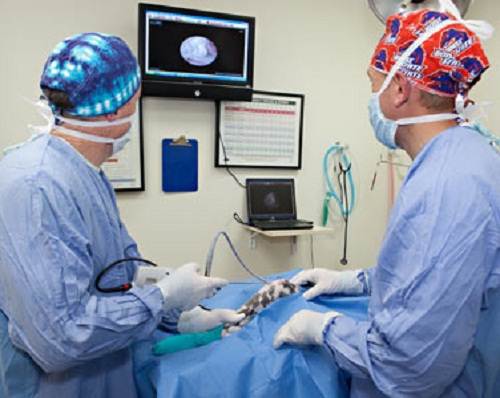
A minimally invasive medical procedure is defined as one that is carried out by entering the body through the skin or through a body cavity or anatomical opening, but with the smallest damage possible to these structures. Also called laparoscopic surgery — for several conditions, in minimally invasive procedures, the doctor makes one or more incisions, each about a half-inch long, to insert a tube. The number of incisions depends on the type of surgery. The tube or tubes let the doctor slip in tiny video cameras and specially designed surgical instruments to perform the procedure. When one undergoes minimally invasive surgery, one is likely to lose less blood and have less postoperative pain, fewer and smaller scars, and a faster recovery than what one would after open surgery. Depending on the condition, one may need only a short hospital stay.

- These surgical approaches were developed with the same goal: minimizing unnecessary trauma to the patient’s body while maintaining the same clinical outcomes.
- Using procedure enabling instruments developed for Minimally Invasive Surgery entire procedures are performed through openings no larger than 12 mm.
- At the completion of these surgeries external incisions require merely a stitch or two to close, and in the case of endoscopic surgeries there is no external incision to close at all.
- The majority of surgeries within body’s ventral cavity can now be completed using a Minimally Invasive Surgery technique, and the advantages for to the patients are numerous.
- Minimally Invasive Surgery minimizes postoperative care, pain, hospital stay expenses, and cosmetic damage.
- By avoiding large external incisions disruption of skin and muscle layers that must be crossed to access the surgical site is minimized. This reduces blood loss and tissue trauma during the procedure, which greatly improves recovery times.
- Immediately following Minimally Invasive Surgery patients suffer less discomfort and are able to leave the hospital sooner than would be possible if an open approach had been used. Once at home the body quickly is capable of returning to healthy day-to-day normal activity, and patients enjoy the lasting benefit having minimal unsightly scaring.
The Benefits of Minimally Invasive Surgery include:
- Increased safety – with smaller incisions, there’s fewer traumas to the body and far less blood loss.
- Decreased scarring – most incisions just take a stitch or two to close.
- Faster recovery – whereas recovery from traditional surgeries typically takes six to eight weeks, patients who have undergone minimally invasive procedures usually recover in only two.
- Decreased length of hospital stay – most MIS procedures are associated with a 23 hour discharge or scheduled outpatient surgery.
- Weeks before the procedure, the physician asks one to take several steps. These include stopping smoking, taking vitamins, avoiding aspirin and other blood-thinning medications, ceasing hormone replacements, filling prescriptions, getting lab work done and pre-registering for surgery at the hospital or facility where it will take place.
- The day before surgery, one should be sure to schedule the post-operation appointment with the physician.
- This should take place two weeks after the surgery date. To prepare for the procedure, one should shower and wash the surgical area with mild soap the night before. It’s also a good idea to wash your hair.
- Abstaining from alcohol the day before, and following the physician’s directions for bowel preparation if applicable. One must remember to avoid taking anything by mouth – including food and water – after midnight before surgery.
- One has to spend the first two or three hours after the procedure in a recovery room for observation besides receiving pain medication and antibiotics. After that, one transferred to a hospital room. One is fitted with an IV. The urinary catheter is removed as soon as one can walk to the restroom with minimal assistance and urinate comfortably.
- The length of the stay will vary depending on the procedure, but it’s generally just a few days or less. Once the dressings in the small incisions are removed, one is free to take a shower if one chooses, but one should refrain from baths. Upon discharge, one receives pain medications and other prescriptions. The physician gives information pertaining to the return to unrestricted activity.
Minimally invasive surgery is becoming more and more common in hospitals. These procedures are performed through tiny incisions instead of one large opening. Because the incisions are small, patients tend to have quicker recovery times and less discomfort than with conventional surgery — all with the same benefits. During a minimally invasive procedure, surgeons make several small incisions in the skin — just a few millimetres, in some cases. A long, thin tube with a miniature camera attached at the end (called an endoscope) is passed through one of the incisions. Images from the endoscope are projected onto monitors in the operating room so surgeons can get a clear (and magnified) view of the surgical area. Special instruments are passed through the other openings. These instruments allow the surgeon to perform the surgery by exploring, removing, or repairing whatever’s wrong inside the body.Minimally invasive surgery can take longer than conventional surgery, but the pros usually outweigh the cons. Because the incisions are small, the patient usually feels less pain, has less scarring, and may recover more quickly than with conventional surgery.
